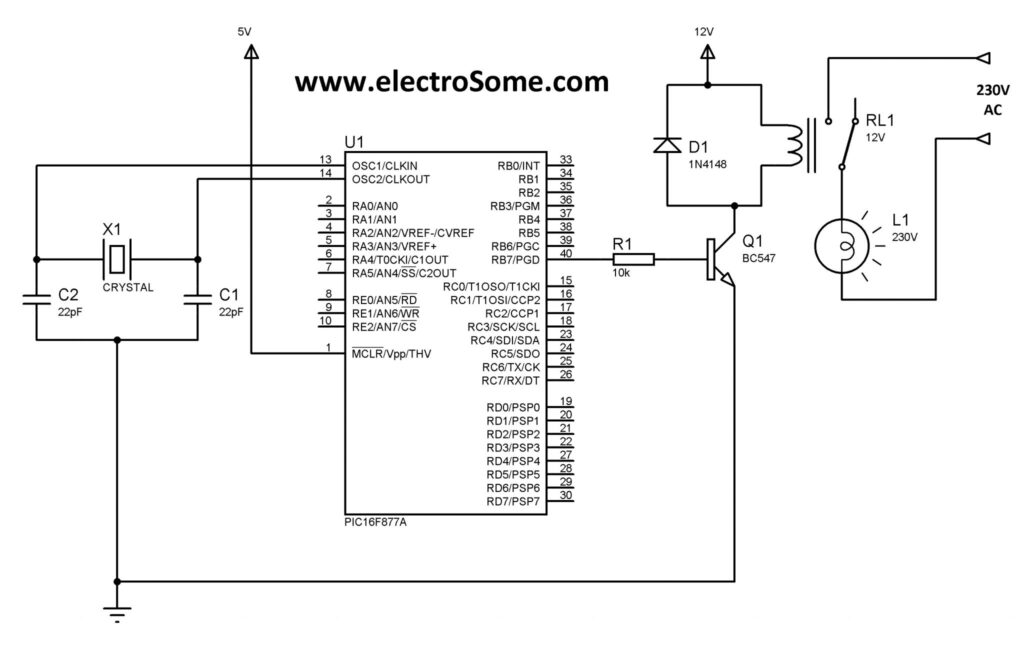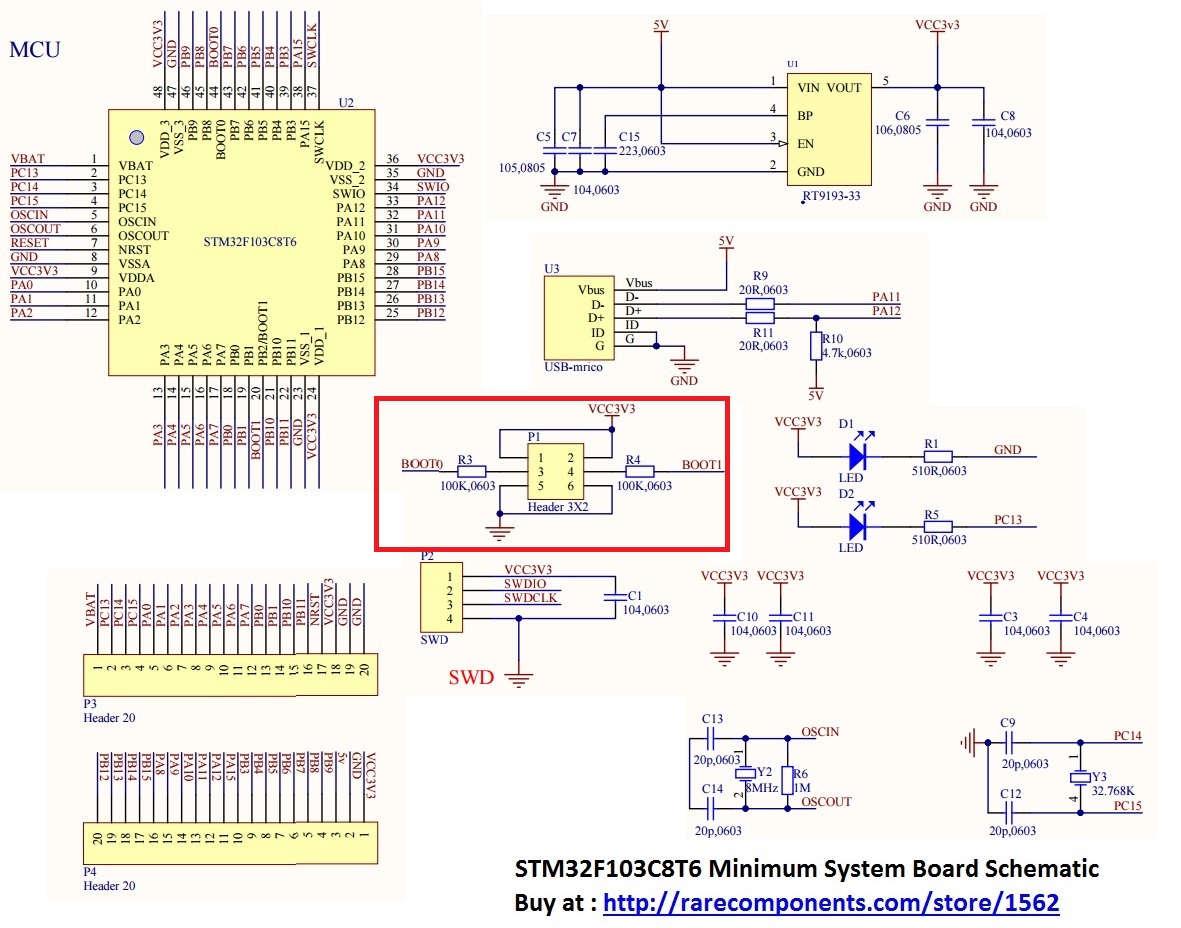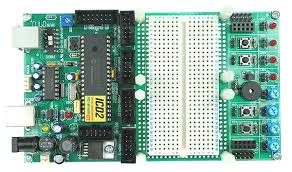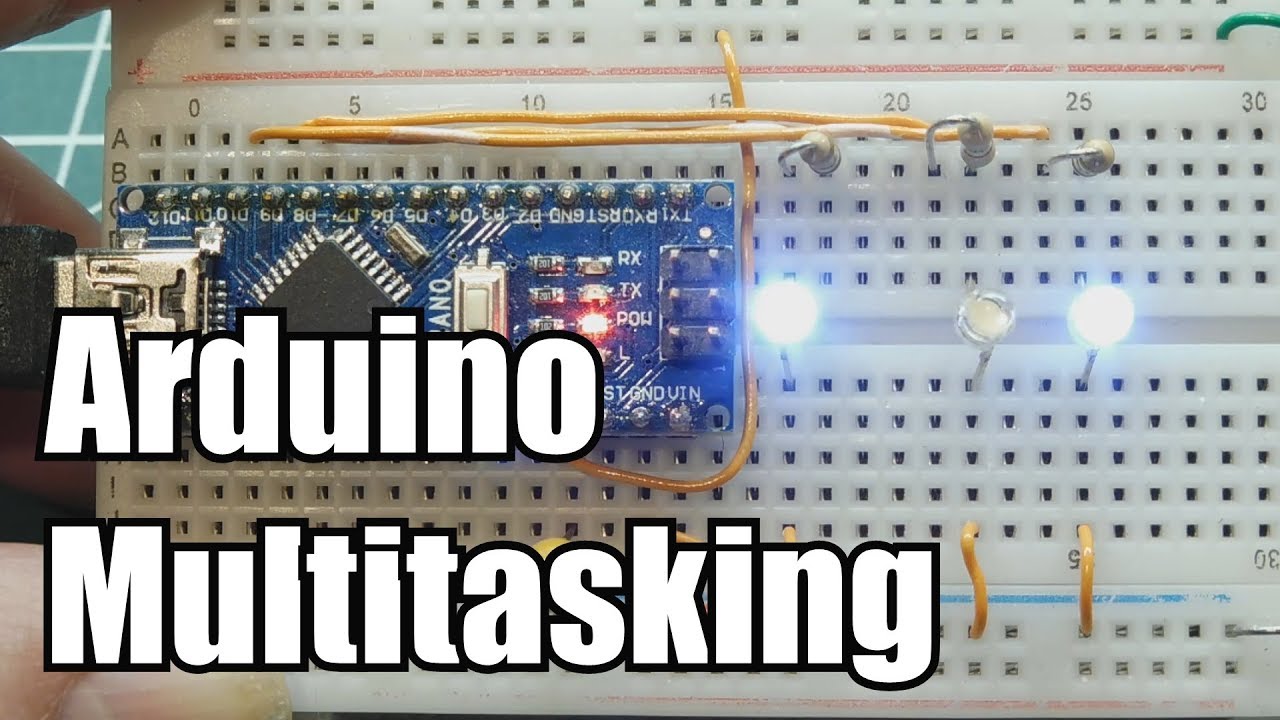How to Control a Relay with a PIC Microcontroller
Relays are incredibly useful devices that allow a low-power signal to control a high-power circuit. They can be found in a wide range of applications, from simple control circuits to complex industrial systems. In this article, we will discuss how you can use a PIC microcontroller to control a relay and switch high-power loads on and off.
Before we get started, let’s first understand how a relay works. A relay is an electromechanical switch that is controlled by a low-power signal. When the signal is applied, the relay’s coil becomes energized, which causes the switch contacts to close or open, depending on the relay’s configuration. This allows you to control a high-power circuit using a low-power input signal.
Now, let’s move on to how you can control a relay with a PIC microcontroller. The PIC microcontroller is a popular choice for embedded applications due to its versatility and ease of use. To control a relay with a PIC microcontroller, you will need the following components:
- PIC microcontroller
- Relay module
- Power supply
- Connecting wires
The first step is to connect the relay module to the PIC microcontroller. Start by connecting the VCC pin of the relay module to the 5V output pin of the PIC microcontroller. Next, connect the GND pin of the relay module to the GND pin of the PIC microcontroller. Then, connect one of the relay’s input control pins to a digital output pin of the PIC microcontroller.
Once the hardware is set up, you can now write the code to control the relay. Here’s an example code snippet in C:
#define RELAY_PIN 1 // Digital pin connected to the relay control input
void setup() {
pinMode(RELAY_PIN, OUTPUT);
}
void loop() {
digitalWrite(RELAY_PIN, HIGH); // Turn on the relay
delay(1000); // Delay for 1 second
digitalWrite(RELAY_PIN, LOW); // Turn off the relay
delay(1000); // Delay for 1 second
}
This code snippet sets up the relay pin as an output and then turns the relay on and off at 1-second intervals. You can modify the code to control the relay based on your specific requirements.
And there you have it! By following these steps, you can easily control a relay with a PIC microcontroller. Relays are versatile devices that can be used in a wide range of applications, and using a PIC microcontroller to control them opens up even more possibilities. Experiment with different configurations and functionalities to see what you can achieve!
Remember to always be cautious when working with high-power circuits and ensure that you have the necessary knowledge and experience to handle them safely. Enjoy exploring the world of relay control with your PIC microcontroller!
How to Control a Relay with a PIC Microcontroller
Relays are incredibly useful devices that allow a low-power signal to control a high-power circuit. They can be found in a wide range of applications, from simple control circuits to complex industrial systems. In this article, we will discuss how you can use a PIC microcontroller to control a relay and switch high-power loads on and off.
Before we get started, let’s first understand how a relay works. A relay is an electromechanical switch that is controlled by a low-power signal. When the signal is applied, the relay’s coil becomes energized, which causes the switch contacts to close or open, depending on the relay’s configuration. This allows you to control a high-power circuit using a low-power input signal.
Now, let’s move on to how you can control a relay with a PIC microcontroller. The PIC microcontroller is a popular choice for embedded applications due to its versatility and ease of use. To control a relay with a PIC microcontroller, you will need the following components:
- PIC microcontroller
- Relay module
- Power supply
- Connecting wires
The first step is to connect the relay module to the PIC microcontroller. Start by connecting the VCC pin of the relay module to the 5V output pin of the PIC microcontroller. Next, connect the GND pin of the relay module to the GND pin of the PIC microcontroller. Then, connect one of the relay’s input control pins to a digital output pin of the PIC microcontroller.
Once the hardware is set up, you can now write the code to control the relay. Here’s an example code snippet in C:
#define RELAY_PIN 1 // Digital pin connected to the relay control input
void setup() {
pinMode(RELAY_PIN, OUTPUT);
}
void loop() {
digitalWrite(RELAY_PIN, HIGH); // Turn on the relay
delay(1000); // Delay for 1 second
digitalWrite(RELAY_PIN, LOW); // Turn off the relay
delay(1000); // Delay for 1 second
}
This code snippet sets up the relay pin as an output and then turns the relay on and off at 1-second intervals. You can modify the code to control the relay based on your specific requirements.
And there you have it! By following these steps, you can easily control a relay with a PIC microcontroller. Relays are versatile devices that can be used in a wide range of applications, and using a PIC microcontroller to control them opens up even more possibilities. Experiment with different configurations and functionalities to see what you can achieve!
Remember to always be cautious when working with high-power circuits and ensure that you have the necessary knowledge and experience to handle them safely. Enjoy exploring the world of relay control with your PIC microcontroller!



